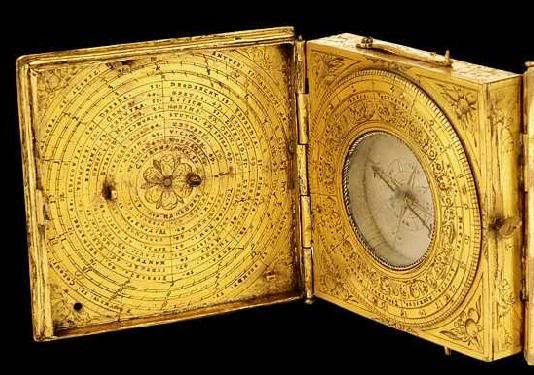Scientific instruments are beautiful objects in their own right as well as offering a fascinating insight into the science of the past. Don’t expect to find anything used by famous scientists in their pioneering discoveries, though. Most early instruments were made either for amateurs to collect, or for professionals such as surveyors, navigators, architects and teachers, as the everyday tools of their trade.
Dating and valuation
There’s a wide range of instruments available. At one end of the scale are machine-made precision tools produced during the 19th century, some of which can be bought for little over £100. At the other end are rare, expensive examples of hand-crafted objects from the 18th century or even earlier. Many are ornately decorated and incorporate materials such as brass, silver, ivory and ebony.
Dating a piece can be a problem for inexperienced collectors
Dating a piece can be a problem for inexperienced collectors, as the same design was often repeated over long periods. Some instruments were marked by their maker, and this usually helps with identification and dating, but it will usually increase the price as well.
Fakes and reproductions of early instruments exist, so if in doubt always consult an expert.
Globes
Terrestrial pocket globes reflect advances in mapping and circumnavigation of the world and often had cases lined with celestial globes – maps of the stars. This one was made by J Smith in 1815 and would fetch around £1,700 to £2,000.
Take care
Never attempt to polish an old scientific instrument of any type without checking with an expert first. Otherwise you may seriously damage its patina (the surface sheen acquired through ageing) and reduce its value dramatically.
Telescopes
John Dollond perfected the use of achromatic lenses, which eliminated problems with colour distortion in telescopes.
Instruments made by this leading 18th-century London maker or his sons, Peter and John junior, are usually signed J or P Dollond London. The one shown at the top of the page dates from the late 18th century and is worth about £1,500 to £2,000.
During the early 19th century unscrupulous dealers attempted to cash in on the Dollond reputation by selling telescopes falsely inscribed Dolland. Watch out for these – they’re still collectable but they’re a lot less valuable.
Sextants and octants
Octants (so-called because their frame is an eighth of a circle) and sextants (a sixth of a circle) measure angular distance by means of reflective mirrors.
Octants usually have wooden frames – mahogany, boxwood or ebony are typical. Sextants were usually brass-framed and more accurate than octants. They are often more expensive. This 18th-century brass and ebony octant is signed by J MacDonald and is worth more than £300.
Dials
Before watches became widely accessible and reliable, dials were often used to check the time. There are two main types: the familiar sundial, most commonly used in the garden, and the pocket dial. This typical 18th-century octagonal pocket dial has an elaborately decorated brass plate and a folding gnomon (the part that casts the shadow). A piece like this would cost about £300 to £400.
Microscopes
This Culpeper-style microscope dates from about 1730 and is one of the most desirable types of early microscope. One like this would be worth between about £4,000 and £6,000.
Microscopes from the 19th century are easier to find. Names to look out for are:
- Powell & Lealand
- W & S Jones
- James Powell Swift
- Smith & Beck











